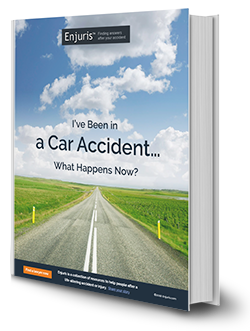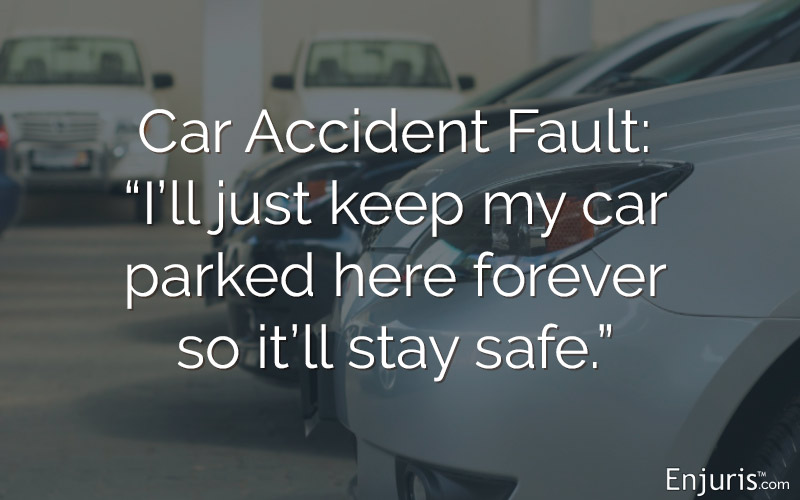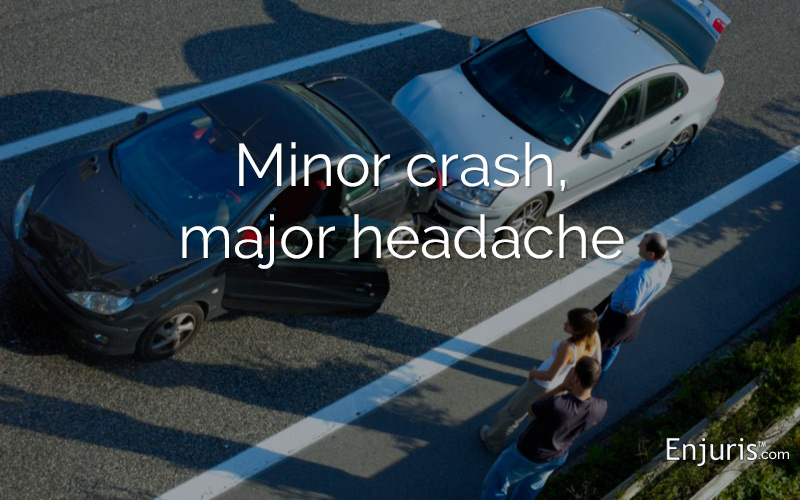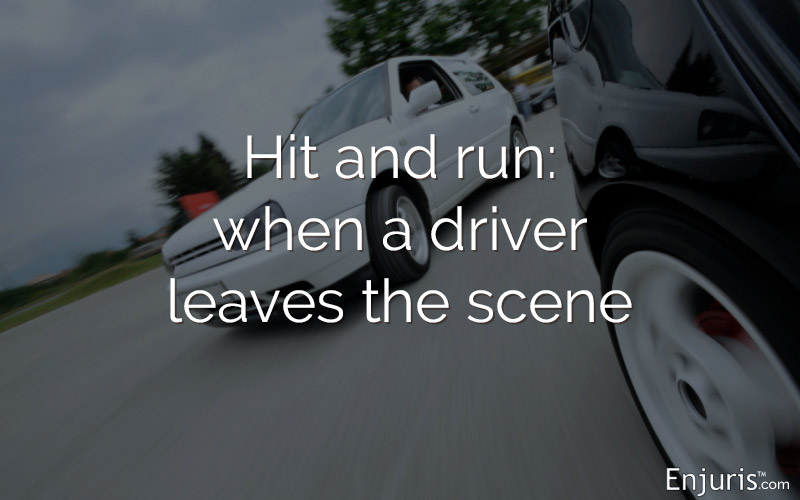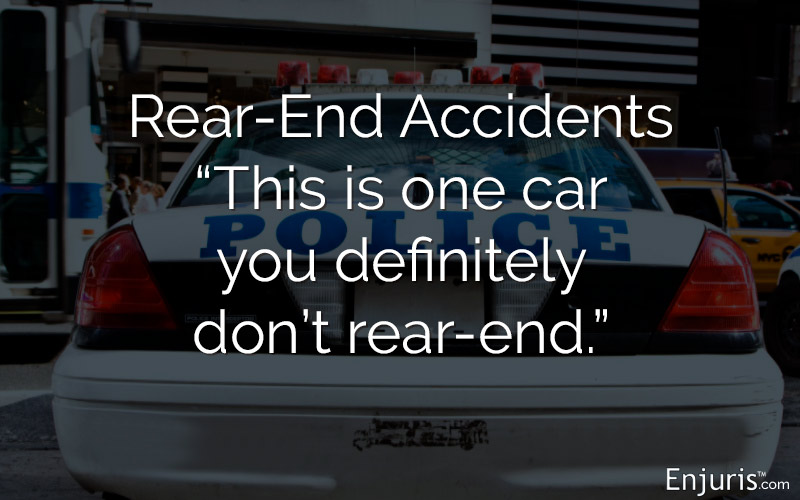What you need to know about insurance requirements, proving fault, and steps to take after a car accident
The first American gasoline-powered automobile was made in Ohio by John Lambert in 1891. Unfortunately, the vehicle burst into flames before it was road tested...
Thirteen years later, Harry Myers of Dayton, Ohio received the first speeding ticket for traveling at the breakneck speed of 12 miles per hour.
Needless to say, Ohioans have a long and complicated relationship with automobiles. This complicated relationship continues today. Ohio manufactures more automobiles than any other state (with the exception of Michigan) , but it also sits well above the national average when it comes to total car accidents and fatalities.
If you're involved in a car accident in the Buckeye State, here are some things you should know.
Ohio car crash statistics
Every year, approximately 1.3 million people die in car accidents worldwide. In the United States, Ohio is considered one of the most dangerous states to drive. This is particularly true in the winter, when Ohio routinely ranks in the top 5 states for car accident fatalities.
| Ohio car crash statistics (2014-2018) | ||||||
|---|---|---|---|---|---|---|
| Crashes investigated | 2014 | 2015 | 2016 | 2017 | 2018 | 5-year total |
| Total crashes | 68,904 | 69,350 | 66,395 | 65,140 | 65,067 | 334,856 |
| Fatal crashes | 452 | 506 | 511 | 5,444 | 498 | 2,511 |
| Injury crashes | 19,200 | 19,646 | 19,547 | 18,832 | 17,853 | 95,078 |
| Property damage | 49,252 | 49,198 | 46,337 | 45,764 | 46,716 | 237,267 |
Source: Ohio State Highway Patrol
Tweet this
Types of car crash damages
Depending on the circumstances of the accident, including how fast the cars were traveling and whether the occupants were wearing seatbelts, injuries can range from minor scrapes and bruises to death.
Common car accident injuries include:
- Whiplash
- Burns
- Traumatic brain injuries and other head injuries
- Spinal trauma
- Broken bones
- Death
- Scarring
Ohio awards both economic and noneconomic damages. "Economic damages" refer to monetary losses resulting from an accident. "Noneconomic damages" refer to losses that don't have a clear dollar value, but are worthy of compensation regardless.
Here's a breakdown of what's included in these 2 categories:
| Types of damages in Ohio | ||
|---|---|---|
| Economic damages | Noneconomic damages | |
| Property damage | Pain and suffering | |
| Medical expenses (including future expenses) | Emotional distress | |
| Lost income | Loss of consortium | |
| Other out of pocket costs | Other non-monetary losses | |
Notably, noneconomic damages are capped in Ohio. Specifically, noneconomic damages for noncatastrophic injuries are capped at the greater of:
- $250,000, or
- 3 times the economic damages awarded (capped at $350,000).
Again, these caps don't apply to catastrophic injuries, which include permanent deformities (such as an amputation) and injuries that prevent the injured person from caring for themselves (such as a traumatic brain injury).
Tweet this
Determining fault for a car accident
All drivers have a legal duty to drive with "reasonable care" and to obey all traffic laws. If a driver violates that duty and causes an accident, the driver can be sued for negligence.
To prove negligence in Ohio, you must prove that:
- The other driver owed you a duty. All drivers owe others on the road a duty to drive with a reasonable degree of care.
- The other driver breached their duty. To prove this, you'll have to show that the driver failed to drive with a reasonable degree of care. For example, if the driver was texting while driving or they ran a red light, then they breached their duty of care.
- You suffered damages as a result of the driver's breach. You must show that the driver's actions (for example, running a red light) caused the accident. In other words, but for the driver's actions, the accident wouldn't have occurred and you wouldn't have suffered damages.
Common examples of actions that lead to a car accident lawsuit based on negligence include:
- Operating a vehicle while under the influence of alcohol or drugs
- Distracted driving
- Violating a traffic law (such as running a red light or speeding)
- Driver fatigue
Car accident statute of limitations
The term "statute of limitations" refers to the maximum amount of time a plaintiff has to file a lawsuit from the date of the alleged offense.
In Ohio, the statute of limitations for a claim based on injury to a person or injury to personal property is 2 years. That means the plaintiff must file a lawsuit within 2 years of the car accident or the plaintiff loses their right to file a lawsuit altogether.
Tweet this
Auto insurance requirements in Ohio
In Ohio, it's illegal to drive a motor vehicle without the following minimum amounts of liability insurance:
- $25,000 for bodily injury or death of one person in an accident
- $50,000 for total bodily injury or death in an accident (i.e., for all persons harmed in one accident)
- $25,000 for property damage per accident
If you're involved in a car accident with someone who doesn't have insurance, you can sue the at-fault driver directly. In addition, drivers in Ohio can purchase uninsured motorist (UM) and underinsured motorist (UIM) coverage with their car insurance policies:
- Uninsured motorist (UM) coverage provides coverage for bodily injury and property damage sustained by you or the passengers in your vehicle as a result of an accident involving a driver who has insufficient insurance to cover the damages.
- Underinsured motorist (UIM) coverage provides coverage for bodily injury and property damage sustained by you or the passengers in your vehicle as a result of an accident involving a driver who has insufficient insurance to cover the damages.
Steps to take after a car accident
Following a car accident in Ohio, there are some steps you're required by law to take, and other steps that are in your best interest to take.
Let's take a look.
Step 1: Stop your vehicle
In Ohio, the driver of any vehicle involved in a motor vehicle accident that results in any damage must:
- Stop their vehicle at the scene or as close to the scene as possible,
- Exchange information (name and address, registration number, and driver's license), and
- Render reasonable assistance to any injured persons.
The penalties for failing to stop and render aid can range from a fine to significant jail time.
Step 2: Call the police
You might not think your accident warrants a call to the police. However, calling the police—even for minor accidents—is generally a good idea.
The police can help by:
- Diffusing any road rage situations
- Keeping the parties safe (from nearby traffic)
- Writing a police report that might help support your insurance claim or lawsuit
- Collecting contact information for the other driver (and helping to prevent the other driver from giving you false information)
- Identifying witnesses and collecting witness contact information
Step 3: Collect witness information
Witnesses are notoriously difficult to track down after an accident. As a result, you'll want to gather all the evidence you can at the time of the accident. This includes the following information from every witness:
- Name
- Address
- Telephone number
- A telephone number of a close friend or family member (in case the witness's telephone number changes)
Step 4: Take pictures and gather any other evidence
Our memories aren't always reliable. If you weren't responsible for the accident, write down what happened as soon as possible. In addition, be sure to take photographs of the scene, as well as any damage to your vehicle or body.
Step 5. Notify your insurer
If the car accident was your fault, you'll want to file a claim with your insurance provider. If the accident wasn't your fault, you can either file a claim with the at-fault party's insurance provider or with your own insurance provider. If you file a claim with your own insurance provider, they'll seek reimbursement from the at-fault party's insurance provider.
Step 6. Talk to an attorney
After you report the accident, there will be an investigation and your claim will either be rejected or the insurance provider will make an offer. Before accepting any offer, consider talking to an attorney to make sure you're getting a fair offer that fully compensates you for past, current and future expenses.
Remember, once you accept an offer (and sign a release), you can't sue for more money at a later date. This can be a huge problem if you later discover that your injuries are worse than you thought. An attorney can help make sure you get everything you deserve.
Step 7: Document everything
The best thing you can do for your claim is to keep good records. In addition to keeping copies of driver information, witness information, and any photographs you may have taken, this means keeping track of your medical expenses and the day-to-day impact of your injuries.

Damages worksheet to track expenses for your injury claim (medical treatment, property damage, lost wages, prescriptions)
Download in PDF format

Sample accident journal/diary to help you document the effect on your daily life
Download in PDF format
- Guide to Ohio Car Accidents
- Distracted Driving Accidents in Ohio
- Guide to Bicycle Accidents in Ohio
- Guide to Pedestrian Accidents in Ohio
- Ohio Auto Insurance Laws
- Ohio Boating Accidents & Boat Laws
- Ohio Bus Accident & Injury Guide
- Ohio Guide to Drunk Driving Accidents
- Ohio Hit-and-Run Accidents
- Ohio Motorcycle Accident Guide
- Ohio Train Accidents & Railroad Injury Claims
Did you know that car accident law varies by state?
Hurt in a car crash? You may find these resources helpful
Need a lawyer?
What does an injury lawyer do?
A personal injury lawyer helps individuals who have sustained injuries in accidents to recover financial compensation. These funds are often needed to pay for medical treatment, make up for lost wages and provide compensation for injuries suffered. Sometimes a case that seems simple at first may become more complicated. In these cases, consider hiring an experienced personal injury lawyer. Read more
Common car accidents
